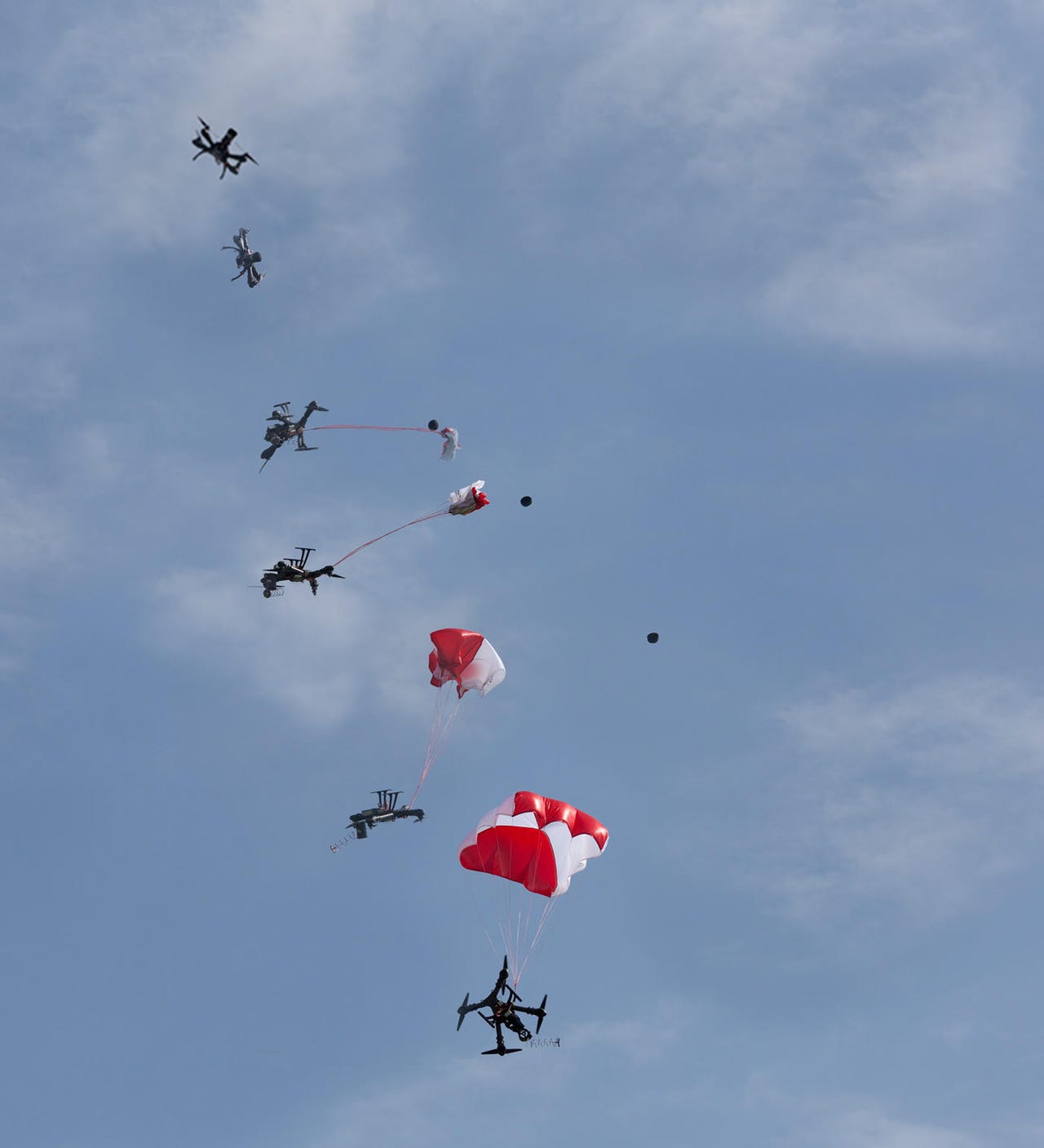Parachute validation: An unlikely new step on the road to drone delivery


Featured videos
Here's a scenario for you: It's ten years in the future and you're walking down the street when a delivery drone malfunctions while toting a five-pound package. The high-pitched whine overhead changes octaves, you look up, and it's clear this hurdling projectile is going down.
Unfortunately, it's a scenario that's bound to play out. As commercial drones become more of a reality, there's increasing and urgent awareness of the problem of drone safety. It's a multi-dimensional challenge involving air traffic management, communications protocols, and a thousand other difficult realities of sending unmanned objects through the air many thousands of times without significant safety issues. But the biggest single concern is that these things could plunk out of the sky and injure or kill unsuspecting pedestrians.
Software can help mitigate crashes with emergency landing measures, and commercial drones are often equipped with superfluous props for redundancy. But the enduring safety technology of choice for commercial drones is one that hails from the 1700s: the parachute.
As the commercial drone industry is struggling against patchwork international regulation, a few organizations have cropped up to provide validation for the industry. One of those called Northeast UAS Airspace Integration Research (NUAIR) is a New York-based nonprofit coalition of private and public entities. Among other consulting and testing, it provides validation for drone parachute systems.
Must-see offers
"When it comes to commercial drone operations, safety has to be a main priority," said Yariv Bash, CEO and co-founder of Flytrex, which just received a coveted validation from NUAIR after strenuous testing. "We chose to work with Drone Rescue Systems [DRS] not only because they are the experts when it comes to keeping drones safely above our heads, but also because we share the same vision of making commercial drones a viable option by upholding the highest safety standards. Our confidence in these tests is bolstered by NUAIR's strong track record, having managed the testing of the world's first certified parachute recovery system. NUAIR is at the forefront of safety regulation, and we're pleased to be testing with an experienced and capable partner."
By providing testing, NUAIR is hoping to give the drone sector the data and standards needed to unlock commercial operations. It's also hoping to become a primary validation service when commercial drone delivery does take off in the United States, which most experts believe is a matter of when not if.
The location of NUAIR has strategic significance. New York State Governor Andrew M. Cuomo recently announced a $30 million investment to develop the 50-mile UAS traffic management corridor between Syracuse and Griffiss International Airport, in Rome, New York, to advance the growing UAS industry as part of the CNY Rising initiative. That puts New York State, and NUAIR, on the front lines of an industry that's still waiting for federal regulators to figure out a path forward.
Currently, the FAA prohibits most drones from being flown directly over people. Professional drone operators can apply for a waiver from that restriction for certain use cases if they can demonstrate they have robust safety mitigations in place including having a validated parachute.
The Flytrex validation was the second parachute standard validation performed by NUAIR. The company's parachute was designed by Drone Rescue Systems to reduce the risk of harming people on the ground. In case of an emergency, a mechanism deploys the parachute within milliseconds and only takes a few minutes to re-pack the system and relaunch the drone. The system also includes a traceable "black box," allowing the company to analyze data leading to a deployment upon recovery.